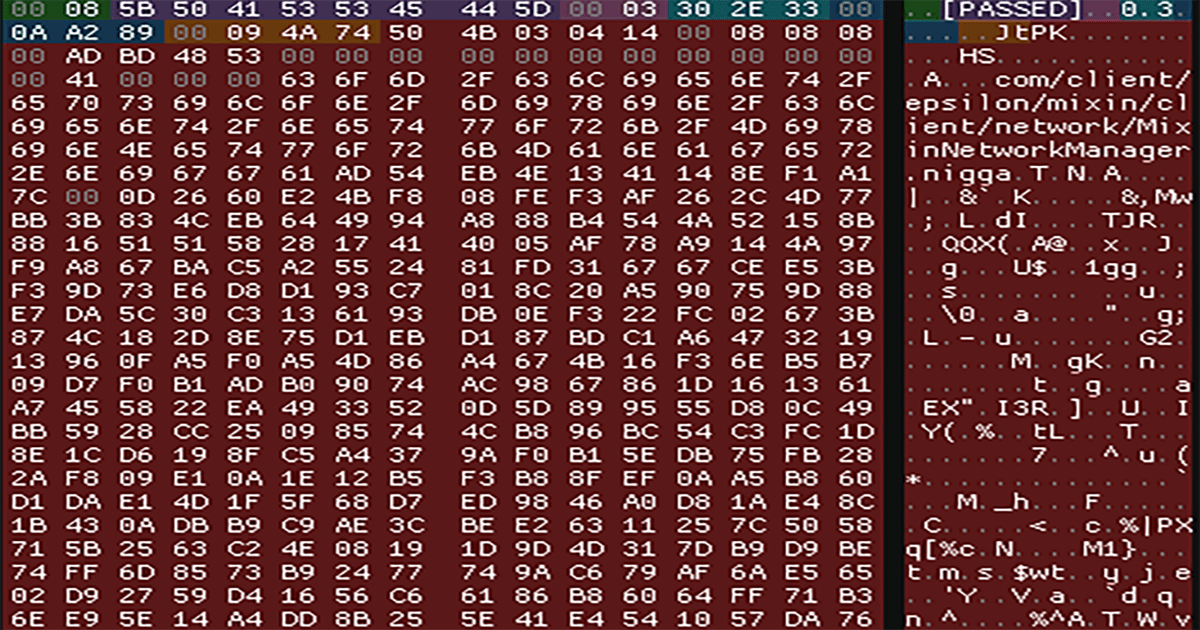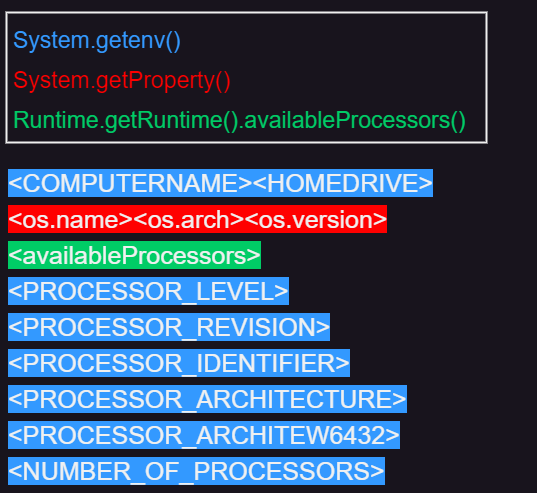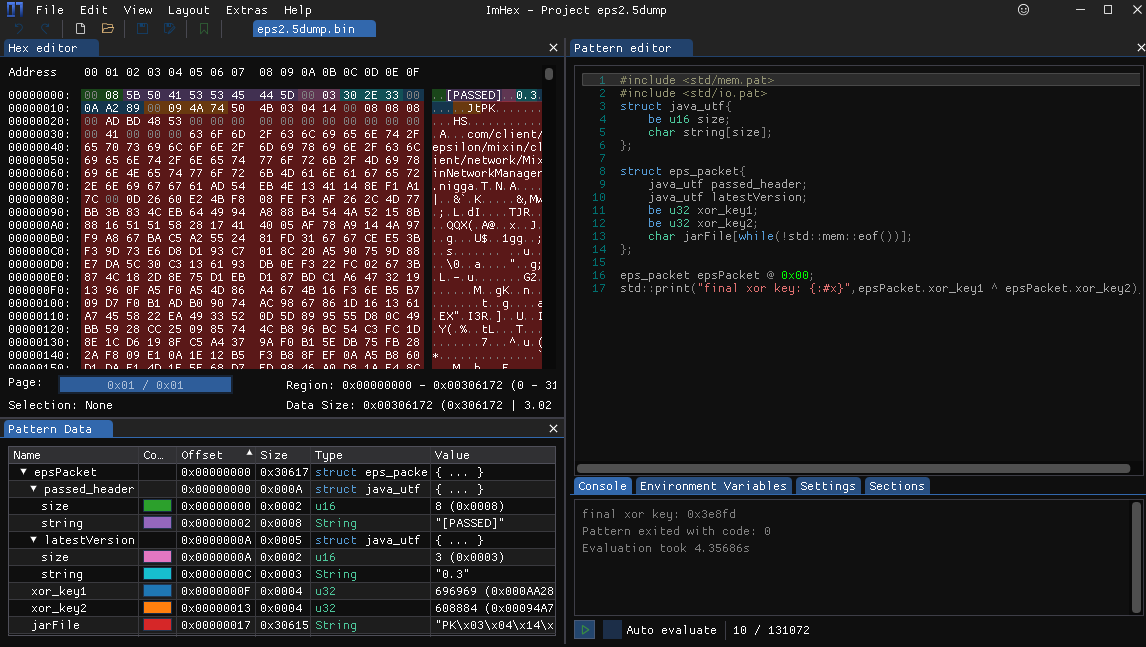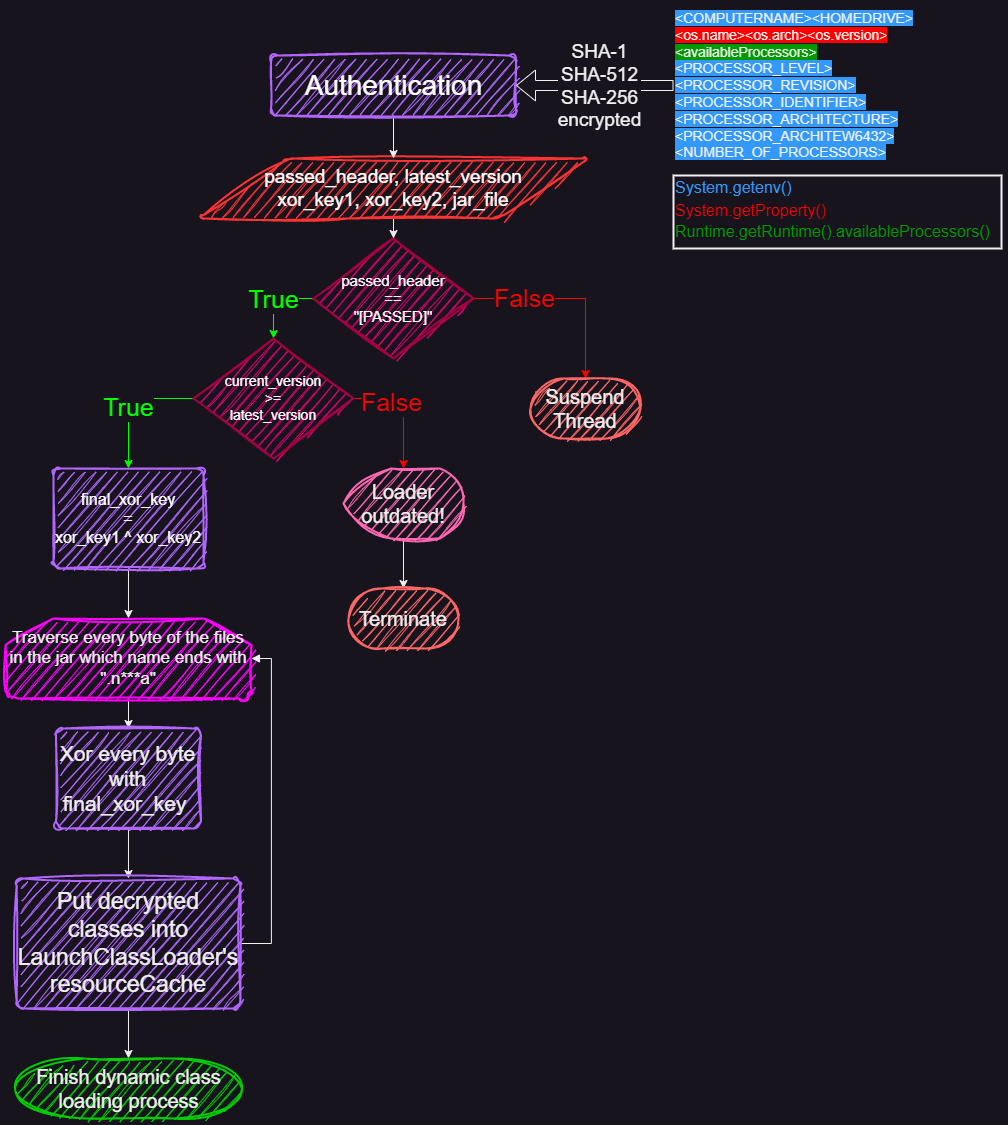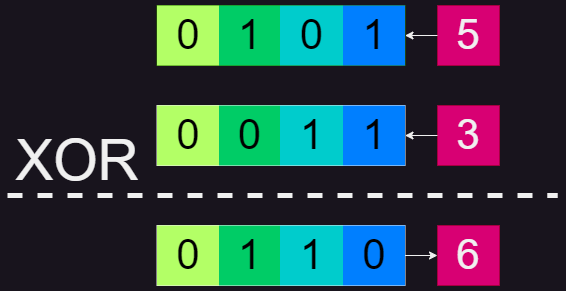Disclaimer
The following pseudocode snippets are heavily beautified. You may not be able to instantly recognize some of these parts; lots of junk code and algorithms are unrolled. But that doesn’t really matter, as when you finish reading this article, you will have a field day breaking it (=
Intro
As we’ve already known, epsilon loader implemented some sorts of encryption on network packets so that crackers can’t parse them directly and use them for their advantage.
So today we’ll go into details about how we broke their encryption.
Analysis of Authentication Process
If you have ever tried to capture epsilon loader’s network packets, you might be surprised by its “plain-text” client-to-server packets and encrypted server-to-client packets.
As a result, the content of the client-to-server packet except the hwid string can be parsed in ease. Just as the image below:
Once we look at the related code in the $$$$$$$$ESKID$$$$$$$$$c.b(), we can figured that the hwid string is composed of several system specifications, given by System.getenv(), System.getProperty() and Runtime.getRuntime().availableProcessors():
Finally, the hwid string was encrypted by multiple ciphers, such as sha-256, sha-1, sha-512.
Analysis of Encrypted Server-to-Client Packet
Then we tracking down the code of authentication and found several server-to-client packets:
1
2
3
4
5
6
7
8
9
10
11
12
13
14
15
String passed = inStream.readUTF();
//checking the head packet to determain whether the authentication is passed
if (passed.equals("[PASSED]")){
//authentication passed
//essential packets
String latestVersion = inStream.readUTF();
int unknown1 = inStream.readInt();
int unknown2 = inStream.readInt();
Float currentVersion = 0.33f;
if (currentVersion >= Float.parseFloat(latestVersion)){
//version check passed
//insert zip parsing process here
As you can see in the pseudocode above, there were 2 checks: authentication check and loader version check.
Once all the checks were passed, it would start to receive a stream of the jar file and parse all the files in it.
However there are 2 suspicious integer packets we haven’t know their function: unknown1 and unknown2, both of them were received before the jar.
Consequently, they should have some important roles.
Rolling down just a little we could find pseudocode like this:
Voila! We can see that it is traversing every byte of the encrypted file and doing xor calculations to every byte, just like a decryption process isn’t it?
What’s more, unknown1 and unknown2 are found participating in forming the final xor key!
Now we can rename them into xor_key1 and xor_key2.
With the information we gathered, the whole server-to-client packet can be parsed in ease:
The whole process can be summarized as this diagram:
Bonus: Bug Hunting
Data loss in narrowing primitive conversion
At the early stage of our analysis, we tried to brute-force the XOR key in order to bypass the most annoying process and minimize the time expense.
Despite of the same result, the XOR key we brute-forced out was a single byte: 0xfd, instead of the 32-bit integer 0x3e8fd that we calculated from the network packets later.
That anomaly aroused our interest in finding its root cause, so we carefully checked the class decryption process and found something wrong with the type:
Just as the image shows, the convertion from 32-bit integer to 8-bit byte can result in data loss because of the narrowed data size.
As a result, all but the 8 lowest bits were discarded in the narrowing primitive conversion.(JLS §5.1.3)
XOR operation
What about the xor operation?
Xor operation happens in binary level and calculates bit by bit.
The calculation rules are as follow:
- If the bits at the ith position are the same we put 0 at that position.
- Else if the bits at the ith position are different we put 1 at that position.
It turns out that even without the higher bits, the calculation process of the lowest 8-bits are still unaffected because of the bit-by-bit calculation rule.
As the final decryption result we need is a single byte, the only necessity is the lowest 8-bits and the rest are useless.
What a tragic for eridani club ^ ^
The download link for the deobfed EpsLoader V0.34 is in the meme image =)
Credits
BotDebug: deobfuscation, author
Trdyun: decryption, authentication bypass
SagiriXiguajerry: co-author
Xiaoxin_xxecy: [REDACTED]
